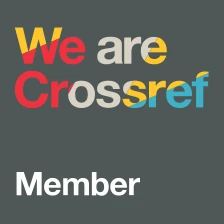Publication of issue 20 'Home and Homelessness'
Guest Editor: Katie Hail-Jares
Editor: Borislav Gerasimov
With housing crises, skyrocketing rents, and increasing rates of homelessness around the world, it is more important than ever to examine the links between housing, homelessness, migration, and exploitation.
The new special issue of Anti-Trafficking Review, thus, comes at an opportune time. Themed ‘Home and Homelessness’, it presents research touching upon these links in three categories: 1) listening to traditional subjects of anti-trafficking research and their views on housing, homelessness, and homes; 2) illustrating how state housing and immigration policies encourage exploitation; and 3) critiquing how housing provided by the anti-trafficking and criminal justice sector often falls short in supporting a home-like environment.
The issue opens with an article by Brodie Fraser, Elinor Chisholm, and Nevil Pierse who explore the experiences of homeless LGBTIQ+ people with sex work and sexual exploitation in Aotearoa/New Zealand. The authors call for stronger social welfare policies and more affordable housing as a way of reducing homelessness and negative experiences in sex work. Next, Martha Cecilia Ruiz Muriel turns her consideration to irregularised migrants and sex workers living in Ecuador’s southern border province of El Oro. She documents how, during the COVID-19 pandemic, the Ecuadorian government ignored these so-called ‘street people’, prompting them to create homes and communities of care, even in the absence of roofs. Corey Shdaimah, Nancy Franke, Todd Becker, and Chrysanthi Leon then demonstrate that housing plays a significant part in people’s ability to successfully exit sex work or trafficking. Drawing on conversations with participants in two Prostitution Diversion Programmes in the United States, as well as staff of those programmes, the authors consider how housing precarity can limit participants’ ability to move forward, as well as their actual and idealised views of ‘home’.
Other authors highlight how immigration policies create environments that facilitate exploitation. Shih Joo Tan presents the experiences of live-in domestic workers in Singapore and Hong Kong. Through interviews with workers and employers, she demonstrates how the live-in requirement allows employers to exert almost complete control over workers. She calls for policy changes that would allow workers to decide if they want to live at their employers’ homes or not. Kyla Raby, Nerida Chazal, Lina Garcia-Daza, and Ginta Mebalds discuss how Australian immigration policy limits the right to work and access social support for migrant survivors of human trafficking, leading to difficulties in securing long-term stable housing. The authors surveyed 312 accommodation providers in Australia and found that for most, their ability to mitigate these barriers to housing was severely constrained due to federal policies.
Other articles examine the quality of housing that governmental or nongovernmental organisations provide to survivors of trafficking and other marginalised groups. Haezreena Begum Abdul Hamid explores the forcible detainment of ‘rescued’ women victims of trafficking in shelter homes in Malaysia. Drawing on interviews with migrant women and shelter home staff, she describes the punitive nature, overcrowding, and lack of services that characterise these ‘homes’. She concludes that they contribute to women’s deteriorating physical and mental health, legal disenfranchisement, and separation from support systems. Karen Romero, Tatiana Torres, Alana Jones, and Ciara Dacosta-Reyes present a desk review of 73 anti-trafficking housing programmes in the US and their internal policies for tenants. They suggest that many programmes’ policies may replicate the dynamics of human trafficking, where survivors are controlled and disempowered. Finally, Chrysanthi Leon, Maggie Buckridge, and Michaela Herdoíza discuss the complexities of religious housing support for people on the US sex offender registry. Using I-Poems, a feminist technique for analysing qualitative interviews, they highlight the voices of people on the registry as well as those who run religious housing programmes for them.
A common thread that runs through the articles in this issue is that the criminal justice, immigration, and social welfare systems are failing survivors of trafficking, migrants, and other marginalised groups. They require urgent reform so that these groups can access housing that is not just a roof but a home.
View the new issue at: https://antitraffickingreview.org/index.php/atrjournal/issue/view/31
See a short video where Kyla Raby, Nerida Chazal, Lina Garcia-Daza, and Ginta Mebalds speak about their article ‘“No Income, Temporary Visa, and Too Many Triggers”: Barriers in accommodating survivors of slavery in Australia’ here.
See a short video where Corey Shdaimah, Nancy Franke, Todd Becker, and Chrysanthi Leon speak about their article ‘Of House and Home: The meanings of housing for women engaged in criminalised street-based sex work’ here.
See a short video where Chrysanthi Leon speaks about her co-authored article ‘“I’m Scared to Death to Try It on My Own”: I-Poems and the complexities of religious housing support for people on the US sex offender registry’ here.



